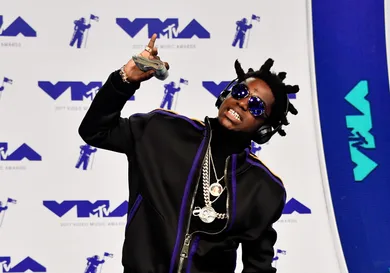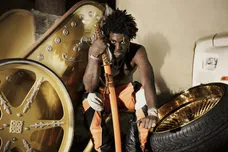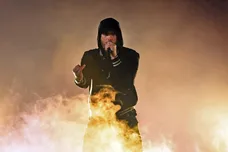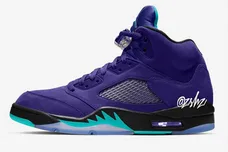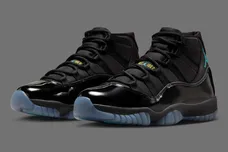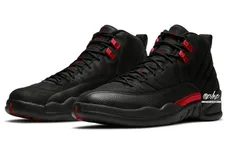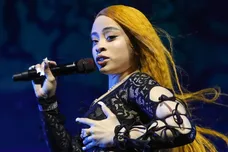Kodak Black is the best high-school rapper in the country. The 18-year-old from Pompano Beach, Florida also happens to be one of a few young artists on Drake's radar. As Earl Sweatshirt warned upon hearing of Drake's discovery of Florida's best kept secret, let's not give too much credit to the 6 God's discerning ears, as Kodak has already built a movement solely off his own credentials, with over 50 songs and/or videos with 6-digit hits on YouTube.
He combines the loose, charisma-driven sound of '90s Dirty South rap with an ability to switch up flows, singing and rapping, that puts him in a class with today's versatile hitmakers. His unapologetically youthful personality is immediately likable, but he can also convey a shuddering sense of pain, perhaps never better than on the title track off his latest mixtape, Heart of the Projects. He couldn't have picked a better title, as his hustle flows through his veins, even if it's not always clear what he's fighting for.
Origins
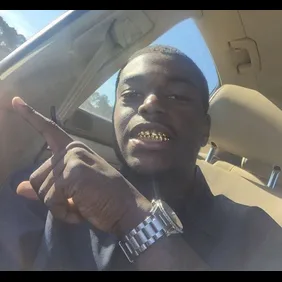
Kodak hails from Pompano Beach, a town of about 100,000 just north of Fort Lauderdale and about an hour north of central Miami. He's a "Project Baby" from the Golden Acres Developments, which make up the most impoverished part of the city. Kodak's mother, as well as his estranged father, are Haitian immigrants in a city with the country's highest percentage of Haitian migrants, and his Haitian heritage is a constant part of his identity.
Kodak started rapping in elementary school. Early in his teen years, he began going to a local trap house after school, more fascinated by the low-budget studio set up in the back than with the guns or drugs. As his hood, and its inhabitants, are often overlooked within the greater Miami area, Kodak doesn't look up to any of his neighboring kingpin rappers. His favorite artist is Lil Boosie, the king of the similarly marginalized town of Baton Rouge. He discovered Boosie with his debut album, Youngest of da Camp, released in 2000, when Boosie was 17. Of course, Kodak wasn't banging the record when he was 3 years old, but to him, Boosie is an old-school legend, and he, like Boosie, wants to be the young savior, the "chosen child," of his own projects.
And it's not a stretch to say that, at age 18, he's got the hood on his back.
Cosigns
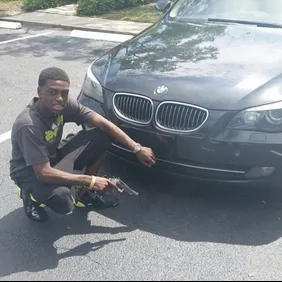
As you may know, Black has already received the game's biggest cosign -- that of Drake. Drizzy recently posted a clip of him doing a GIF-ready dance to one of Kodak's biggest hits, "SKRT," off his latest mixtape, Heart of the Projects. Drake played the same song during episode 6 of OVO Sound Radio, before dropping his joint album with Future, What a Time to Be Alive. OVO co-founder Oliver El-Khatib dropped two Kodak songs, "Shoulda Woulda" and "No Flocking," during OVO Sound episode 2, when Drake first responded to Meek Mill with "Charged Up."
Shortly after Drake posted his "SKRT" dance on Instagram, Earl Sweatshirt, also a fan of Kodak, responded with apprehension, saying that Drake "can be a bit of a vulture on young rap n*ggas." Despite the obvious benefits of the major exposure Drake has already given Kodak, Earl noted that "the line between paying homage and wave riding is a blurry one."
Funnily enough, about a week before Drake bumped "SKRT" on his private jet, Meek Mill shouted out Kodak while he, too, was up in the clouds. In the caption of the below photo, Meek wrote lines from Kodak's "No Flocking" and included the hashtag "freekodak" shortly after the young rapper had been arrested on charges of assault, robbery, and kidnapping.
Perhaps Baton Rouge's hottest act, Kevin Gates, shouted out Kodak on his Murder for Hire track "Khaza."
Style & Influences
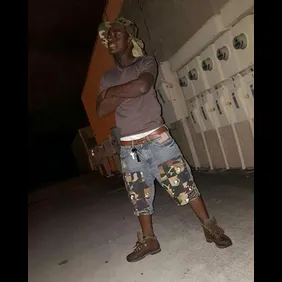
There are a few comparisons that immediately come to mind upon hearing Kodak. First, there's his biggest idol, Boosie, with whom Kodak shares an untampered, localized drawl. His voice is more mumbly than Boosie's, but it's also more melodic and flexible. The main kinship between the two rappers lies in their unique realist portrayals of their neighborhoods and their drive to escape said places without shedding them from their personas.
In his sometimes loose, improvisational style, there are similarities to another Louisiana rapper who blew up at a young age: Lil Wayne. Indeed, Kodak's sound is more '90s Louisiana rap than anything resembling the aggressive and pervasive trap music that has encompassed most of the south's regional sounds. His subject matter is less otherworldly than that of Weezy, and his raps aren't littered with as many clever figures of speech, but like Wayne, he thrives off his youthful, sometimes drug-fueled, energy, and once he's locked in, it's guaranteed that he'll connect on each of his ensuing bars. He's using his slight appearance and his squeaky teenage voice to convey a wide-eyed dream that's as inspirational as it is fierce.
There are, however, a couple of likenesses to rappers closer in age. Kodak's ability to turn out a catchy club smash with no hook, as with "No Flocking," is reminiscent of Bobby Shmurda's "Hot N*gga." He sometimes raps with the intimidating irreverence of a dialed-in Chief Sosa. Though the south is oversaturated with talent, he's coming from a place that's never been recognized. And he's eager to define his stomping grounds with a brand new sound.
Legal Trouble
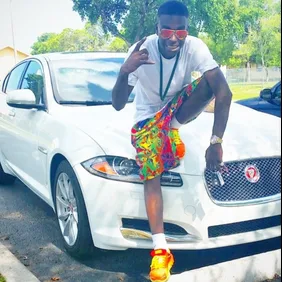
Earlier this month, Kodak was arrested on charges of kidnapping, assault, and robbery. Cops pulled him over on the pretense of said allegations, and, in the process, they discovered a small amount of marijuana as well as Kodak's suspended driver's license. He's been bailed out, though further legal proceedings await, and the consequences, considering his past record, could be serious.
Keep in mind that Kodak recently turned 18, thus he's now eligible for county jail as well as federal prison. For much of his teen years, he has been in and out of juvenile hall. He once narrowly escaped a charge that was punishable by life. Soon after getting out as a 17-year-old, shortly before dropping Heart of the Projects, Kodak dropped "Fresh Outta Juvie." As with his recent (much shorter) stint, he hit the studio immediately upon his release.
In the video below, watch an elated Kodak walk out of the detention center and then destroy a club in Orlando a week later. He includes concert footage in the intros to many of his music videos, and the screaming mobs at each local venue give you a sense of just how huge he is in his home state.
Freestyles
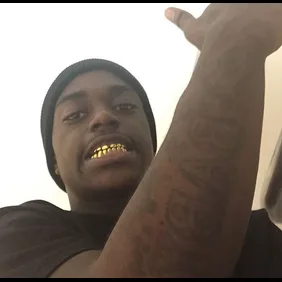
There are too many quality tracks to run through on Kodak's past two mixtapes, Heart of the Projects and Project Baby. There are few features and the beats -- though often evocative of Mannie Fresh or Mouse On Tha Track -- come from little-known producers. That being said, a more accessible entry point to Kodak's unique style might come via his wide array of freestyles, which usually come over classic instrumentals from all over the map.
This year, we've seen veteran rappers try to keep up with the prolific output of the young guns by steadily dropping freestyles over old-school classics. The results have provided some nostalgia but they have possesed little imagination when stacked up against the originals. A Kodak Black freestyle is something different entirely. He brings his own regional stylings to songs from different locales, and he pays homage to the originals (often created before he was born) while giving them a fresh spin with different melodies and detailed subject matter.
He's got enough humorous charm to rock Just Blaze's "Oh Boy." He does similar justice -- though, this time, with morose grittiness -- to a West Coast classic on "5 On It." See him put his own spin on those as well as an acoustic version of Future's "Honest" below.
